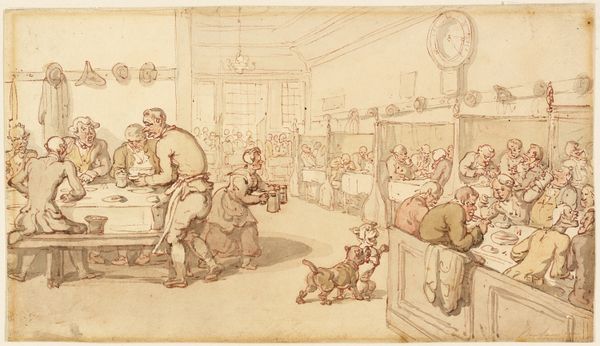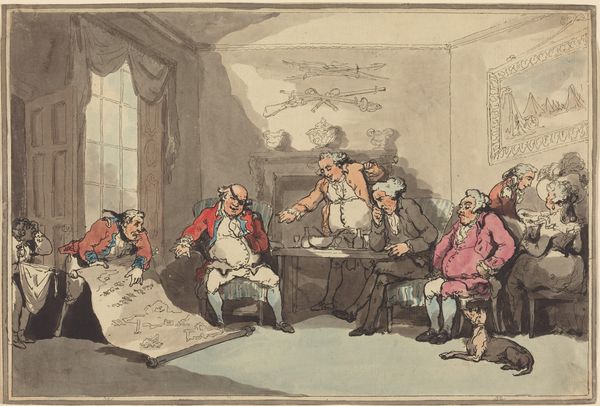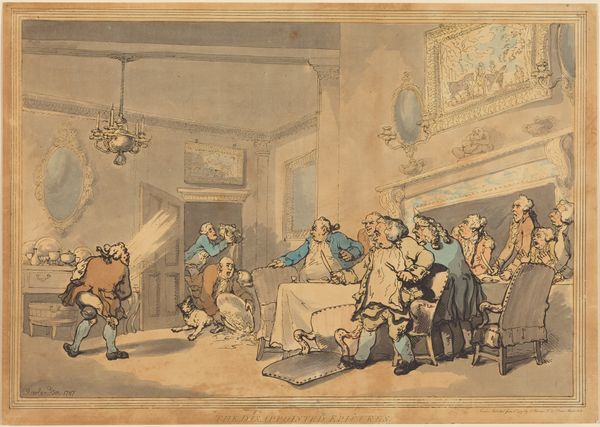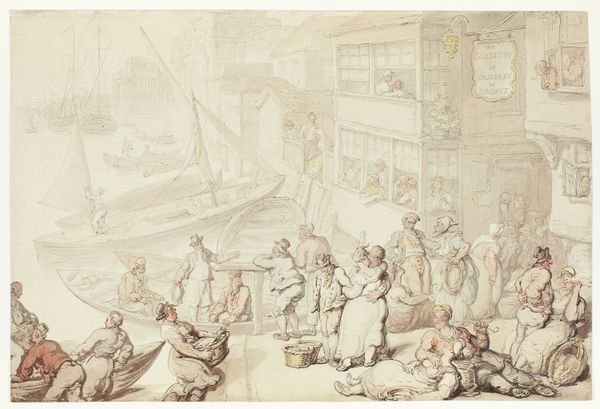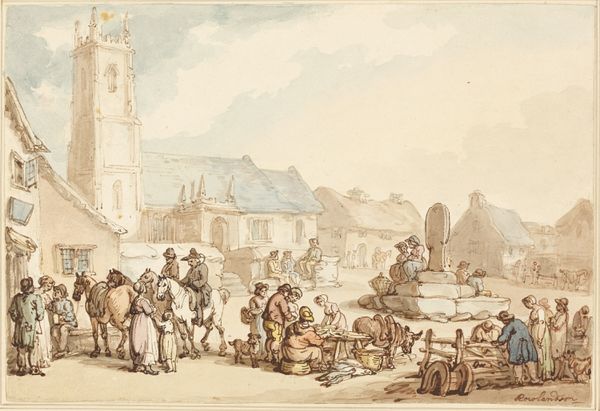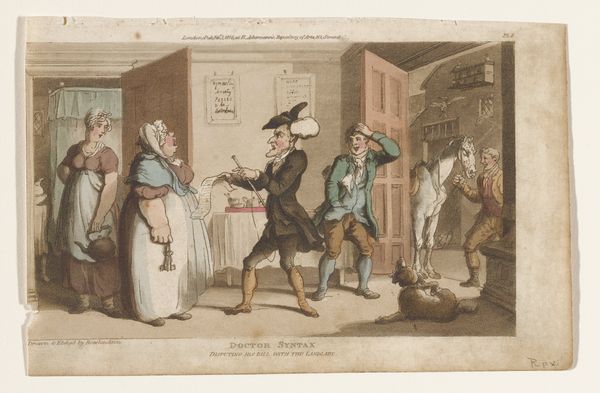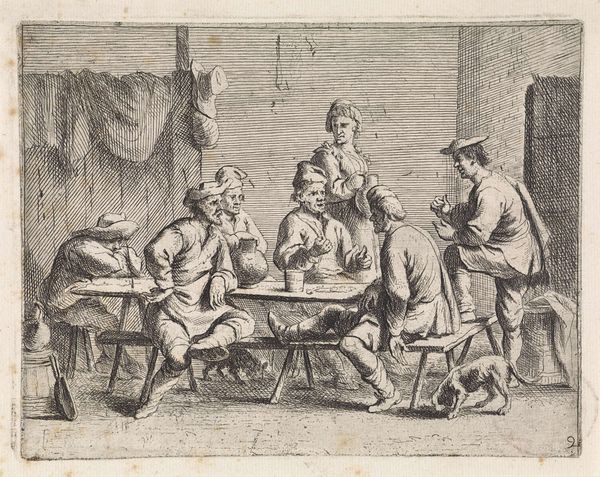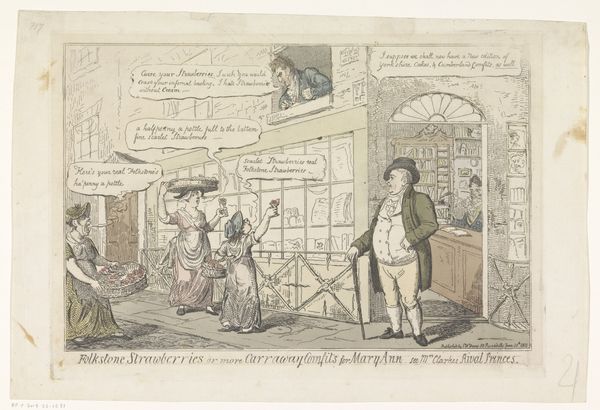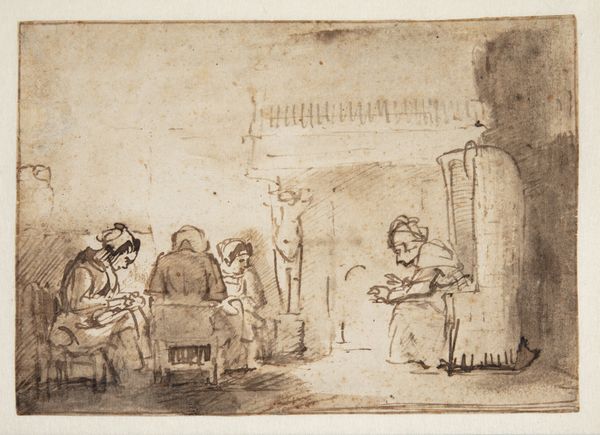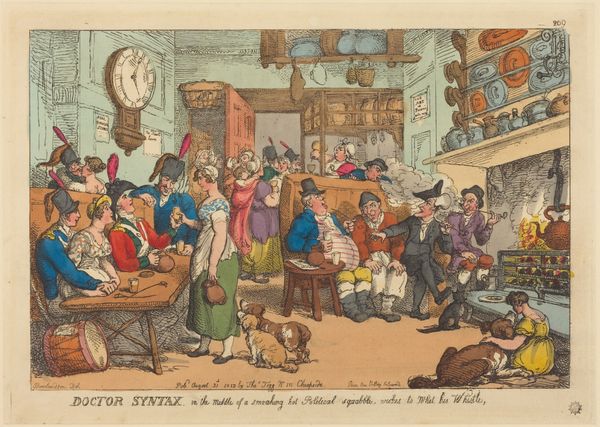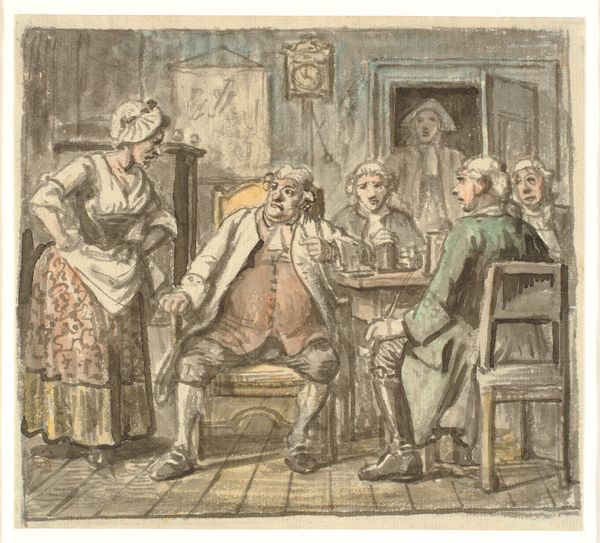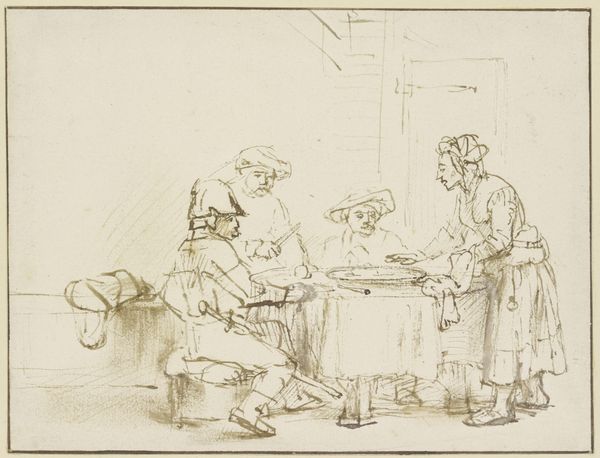
drawing, print, watercolor, ink
#
portrait
#
drawing
# print
#
figuration
#
watercolor
#
ink
#
romanticism
#
cityscape
#
watercolour illustration
#
genre-painting
Dimensions: 148 × 238 mm
Copyright: Public Domain
Curator: Thomas Rowlandson's watercolor and ink drawing, "Interior of an Inn," offers us a glimpse into everyday life. The exact date is unknown, but it vividly captures a social scene. Editor: Immediately, I'm struck by the informality. It's a relaxed atmosphere. The figures are so expressive, caught in mid-conversation, smoking, or simply enjoying their drinks. Curator: Rowlandson's work, even his seemingly light-hearted genre scenes, are deeply rooted in the socio-political climate. Inns were public spaces, vital for communication and the exchange of ideas. We see a cross-section of society represented here. Editor: Exactly. The energy of this space—who is allowed to occupy it, and under what conditions—reflects broader power dynamics. The women here, for instance, are clearly working, providing service to male patrons, which implies gendered roles and labor expectations. Curator: Rowlandson frequently satirized the social customs and political events of his era, even within these more intimate settings. The grand clock looming over one table and the lottery sign hint at the passage of time and perhaps the precariousness of fortune. Editor: And consider the materiality. The sketch-like quality of the drawing, the light washes of color, all suggest immediacy and observation. He's not aiming for idealized beauty, but rather capturing a raw moment, a truth. Curator: His work provided a commentary, highlighting both the pleasures and the follies of the era. This interior represents more than just a gathering place; it’s a microcosm of society, warts and all. Editor: Absolutely, the way Rowlandson frames it is an implicit commentary about social interactions and divisions in that space. This interior setting encapsulates larger socio-political narratives, highlighting how leisure and labor intersected, particularly across gender and class. It also gives us a space to ask ourselves, “How different is it today?” Curator: Reflecting on it, it makes one wonder if these "Interior" scenes functioned as spaces that revealed a desire to preserve what society looked like, to examine behaviours considered worthy of documenting, at the time. Editor: Agreed; thinking through it has also encouraged me to see how those social power dynamics also shape what ends up being preserved and considered significant, culturally.
Comments
No comments
Be the first to comment and join the conversation on the ultimate creative platform.
